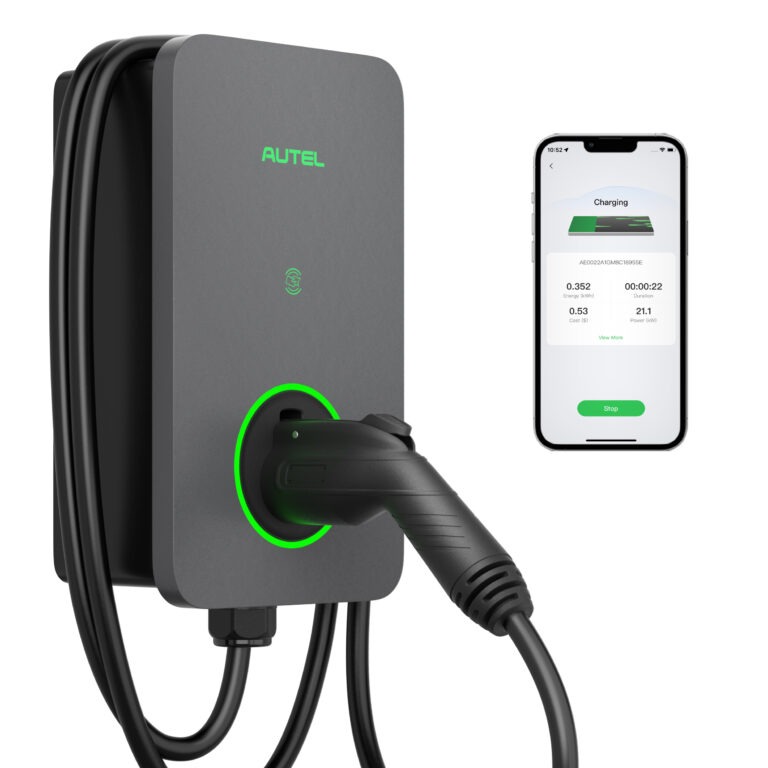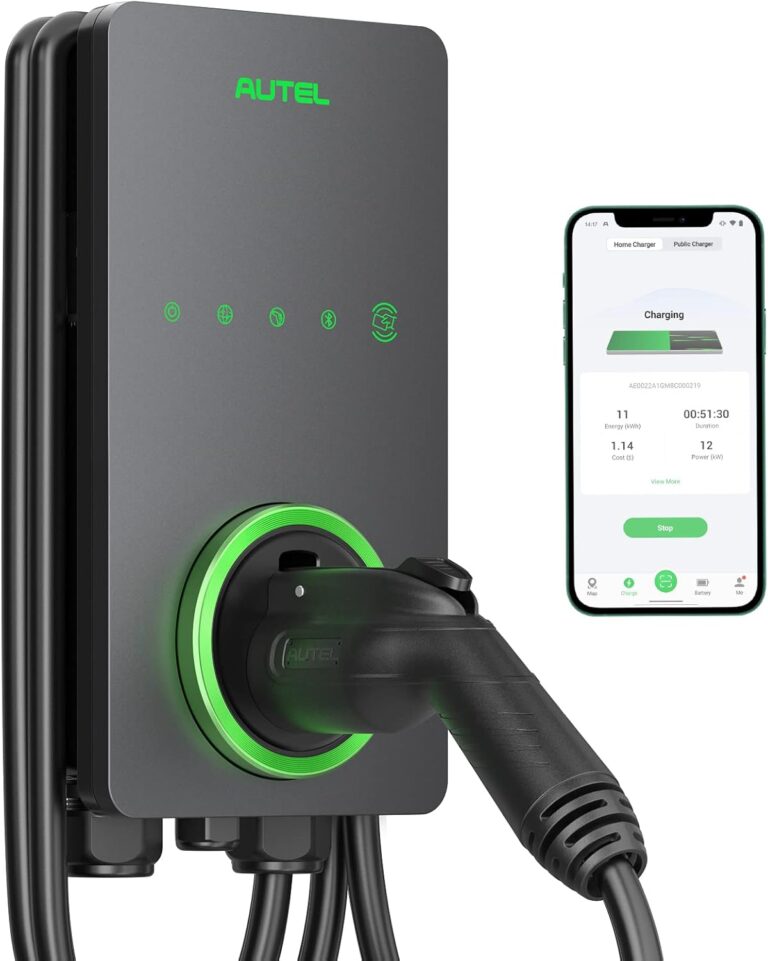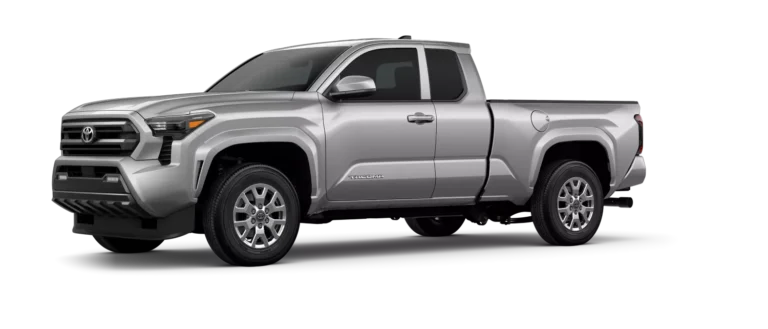
Tesla Model 3 vs BMW i4
Compare models, trims, specifications, features and pricing for the Tesla Model 3 vs BMW i4
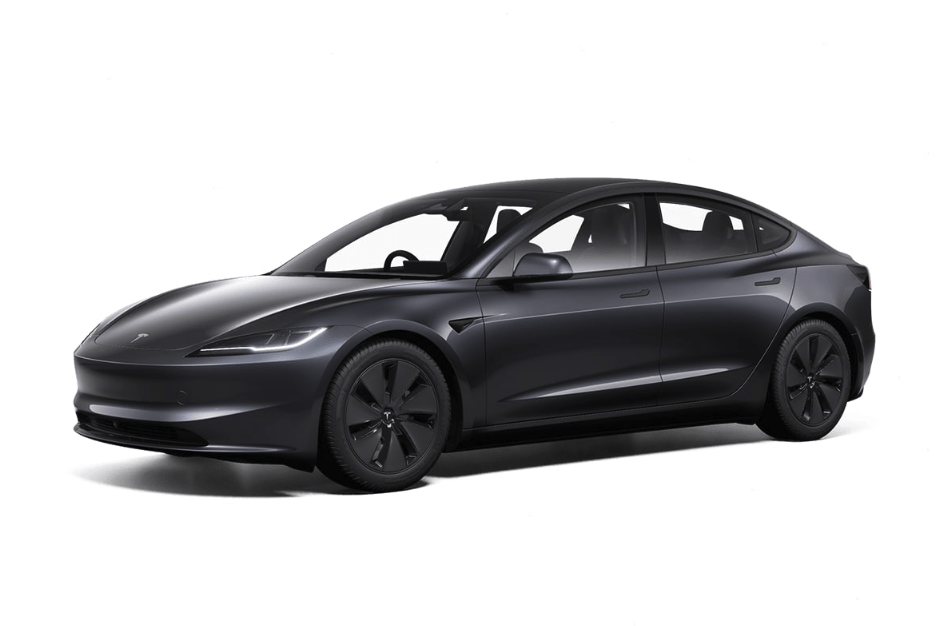
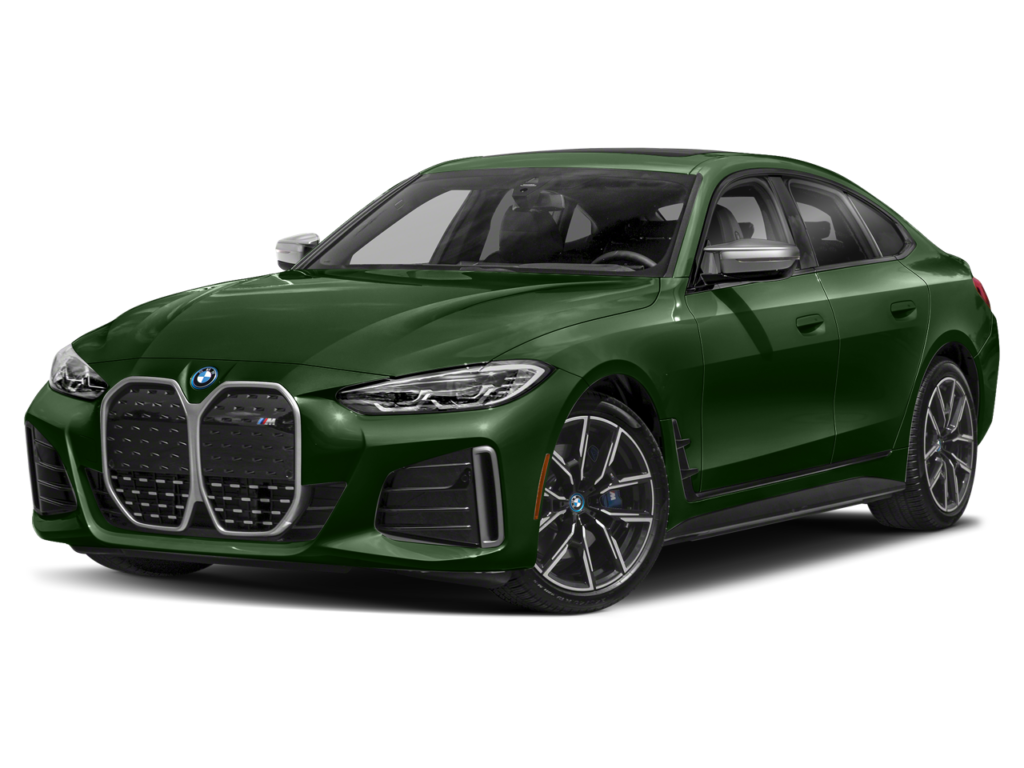
Don’t risk hidden issues! Click ‘Check Any VIN Now’ to see damage, recalls, mileage issues, title checks and more!
What Is The Tesla Model 3
The Tesla Model 3 is one of the most popular all electric vehicles on the planet, known for its cutting edge technology, minimalist design, and impressive performance. It offers:
- Exterior: LED headlights and taillights for a modern, high tech look.
- Interior: Minimalist cabin with a 15 inch touchscreen controlling nearly all functions.
- Features: Advanced driver assistance with Autopilot and optional Full Self Driving capabilities.
What Is A BMW i4
The BMW i4 is a luxury electric Gran Coupe that combines BMW’s signature performance with an EV powertrain. It offers:
- Exterior: M Sport styling options, larger alloy wheels, and a sleek fastback shape.
- Interior: Driver focused cockpit with a curved digital display and premium materials.
- Features: Fast charging capability with up to 205 miles of range added in 30 minutes.
Our Comparison Will Cover:
Exterior and Interior Dimensions
Design and Exterior Styling
Interior Comfort and Space
Technology and Infotainment
Performance and Handling
Safety Features and Driver Assistance
Electric Efficiency
Trim Levels and Pricing
Reliability and Maintenance
Maintenance, Insurance, Depreciation and Fuel Costs
Pros and Cons of Each Model
Which Model is Right For You?
Table of Contents
Tesla Model 3 vs BMW i4 Exterior Dimensions
Tesla Model 3 Exterior Dimensions
Length: 184.8 inches (4694 mm)
Width (with mirrors): 82.2 inches (2088 mm)
Width (without mirrors): 72.8 inches (1849 mm)
Height: 56.8 inches (1443 mm)
Wheelbase: 113.2 inches (2875 mm)

BMW i4 Exterior Dimensions
Length: 188.3 inches (4783 mm)
Width (with mirrors): 82.3 inches (2093 mm)
Width (without mirrors): 72.9 inches (1852 mm)
Height: 57.0 inches (1448 mm)
Wheelbase: 112.4 inches (2856 mm)

Exterior Winner
For overall smaller size and easier maneuverability in tight spaces: The Tesla Model 3 is slightly more compact overall. Its shorter length and narrower width (without mirrors) might make it a bit easier to park and navigate in congested areas.
For slightly more rear legroom and a more practical trunk: The BMW i4 provides the edge. If rear passengers need that extra inch, the i4 is the winner here.
Tesla Model 3 vs BMW i4 Interior Dimensions
Tesla Model 3 Interior Dimensions
Front Headroom: 40.3 inches
Rear Headroom: 37.7 inches
Front Legroom: 42.0 inches
Rear Legroom: 35.2 inches
BMW i4 Interior Dimensions
Front Headroom: 40.6 inches
Rear Headroom: 36.6 inches
Front Legroom: 41.5 inches
Rear Legroom: 34.9 inches
Interior Winner
As you can see from the numbers, the differences are VERY slight. The actual feeling of spaciousness will likely depend more on seat design, window size, and the overall interior layout than on these minor dimensional differences. Real world testing (sitting in both cars) is essential for assessing interior space.
Because the numbers are so close, declaring a definitive “winner” is not really possible. Seating design and overall interior feel will likely be more important than those tiny measurements.
Tesla Model 3 vs i4 Technology and Infotainment
Tesla Model 3 Tech and Infotainment
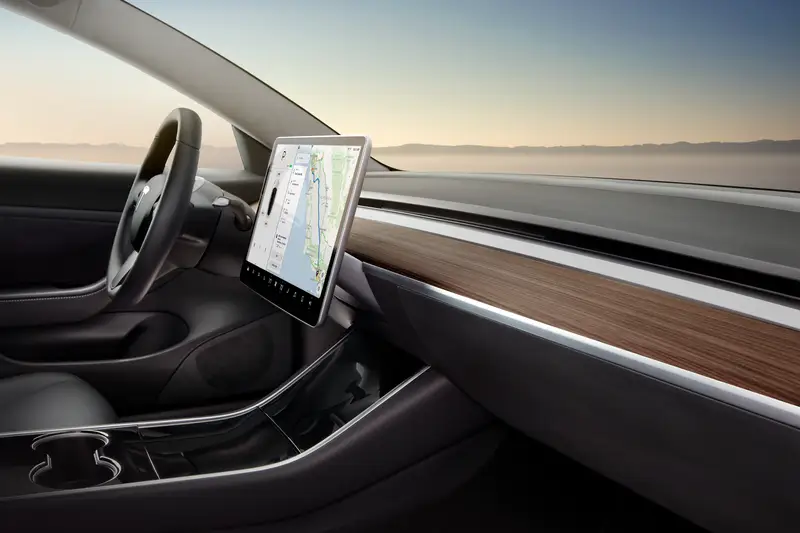
Display: 15 inch central touchscreen (landscape orientation)
Operating System: Tesla’s proprietary operating system (Linux based)
Interface: Clean, minimalist, touch focused. Lacks physical buttons for most functions.
Navigation: Integrated Tesla Maps with real time traffic updates, Supercharger locations, and route planning.
Connectivity: Bluetooth, Wi-Fi, cellular connectivity (for over the air updates and streaming services)
Audio System: Standard audio system (quality varies depending on year); optional premium audio system.
Smartphone Integration: No Apple CarPlay or Android Auto. Relies on Tesla’s mobile app and Bluetooth for phone integration.
Voice Control: Natural language voice control for various functions (navigation, media, climate control).
Over-the-Air Updates: Frequent over the -air software updates that can add new features, improve performance, and fix bugs.
Unique Features:
Tesla Arcade (built in games)
Tesla Theater (streaming video services)
Sentry Mode (security system with cameras)
Dog Mode (keeps climate control running for pets)
“Fart Mode” (for humorous sound effects)
Strengths:
Seamless integration of all vehicle functions into a single touchscreen interface.
Frequent over the air updates that keep the system fresh and add new features.
Unique and innovative features (e.g., Sentry Mode, Dog Mode, Tesla Arcade).
Responsive and intuitive touchscreen interface.
Weaknesses:
Lack of physical buttons can be distracting for some drivers.
No Apple CarPlay or Android Auto support, which limits smartphone integration.
Reliance on cellular connectivity for some features can be a drawback in areas with poor reception.
Some features can feel gimmicky rather than truly useful.
BMW i4 Tech and Infotainment
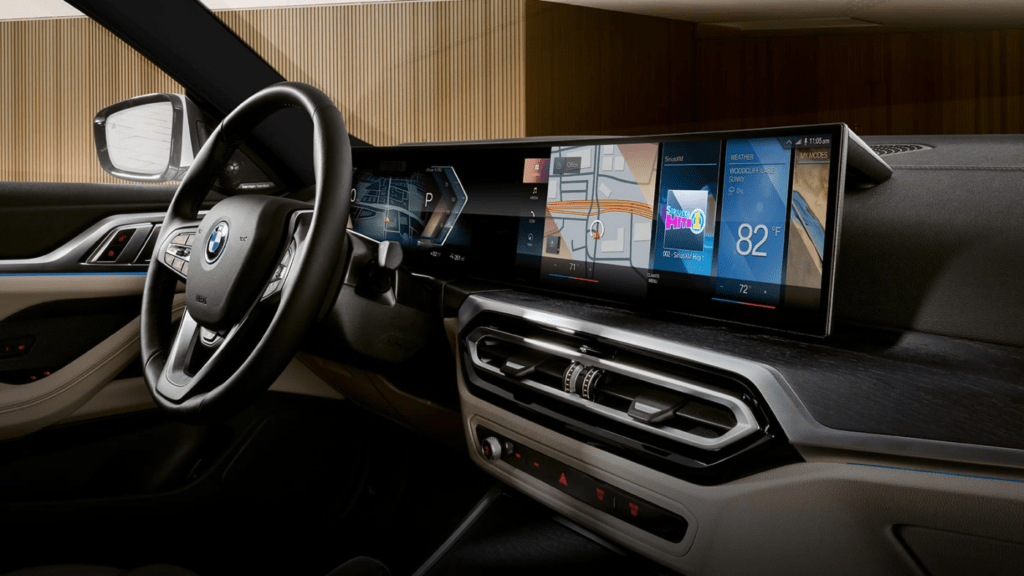
Display: BMW Curved Display integrating a 12.3 inch information display and a 14.9 inch control display.
Operating System: BMW Operating System 8 (or later depending on model year).
Interface: Combination of touchscreen, iDrive controller, and voice control.
Navigation: BMW Maps Navigation system with connected services, real time traffic information, and destination suggestions.
Connectivity: Bluetooth, Wi-Fi, 5G cellular connectivity (for connected services and over the air updates)
Audio System: Standard audio system; optional Harman Kardon or Bowers & Wilkins premium sound systems.
Smartphone Integration: Wireless Apple CarPlay and Android Auto support.
Voice Control: BMW Intelligent Personal Assistant (natural language voice control for various functions).
Over the Air Updates: Regular over the air software updates for system improvements and new features.
Unique Features:
BMW Digital Key Plus (use your smartphone as a key)
My BMW App (remote control of vehicle functions, trip planning)
Personalization options and driver profiles.
Strengths:
Combination of touchscreen, iDrive controller, and voice control provides flexible and intuitive control options.
Wireless Apple CarPlay and Android Auto support for seamless smartphone integration.
Premium audio system options offer exceptional sound quality.
Modern and stylish display.
Weaknesses:
iDrive system can have a steeper learning curve than simpler touchscreen based systems.
Some features require a subscription after a trial period (e.g., certain connected services).
May not be as frequently updated as Tesla’s system.
Tech and Infotainment Winner
Overall Winner: It’s a TIE (with asterisks)
This is one category where a clear winner is hard to declare. Both systems are excellent, but they cater to different priorities.
The Model 3 Wins (for some): For pure innovation, seamless integration, frequent updates, and unique features, the Model 3’s system is incredibly impressive. Its simple interface is easy to learn, but with practice.
The i4 Wins (for others): For flexible control methods, familiar operation, and better smartphone integration, the i4 system is more accessible and satisfying.
Here’s a more detailed breakdown:
Ease of Use: i4. The iDrive controller offers an alternative to the touchscreen, which some drivers find more intuitive and less distracting. Tesla’s system relies almost entirely on the touchscreen, which can take some getting used to.
Smartphone Integration: i4. Wireless Apple CarPlay and Android Auto are a major plus for users who rely heavily on their smartphones. Tesla’s lack of support is a significant drawback for many.
Innovation and Features: Model 3. Tesla is known for pushing the boundaries of technology, and its system is packed with unique features like Sentry Mode, Dog Mode, and Tesla Arcade. The system has become well known, and a classic.
Updates and Improvements: Model 3. Tesla’s over the air updates are more frequent and often include significant new features and improvements.
Audio Quality: i4. The optional Harman Kardon or Bowers & Wilkins audio systems in the i4 are a noticeable upgrade over the Tesla Model 3’s base audio system.
Tesla Model 3 vs i4 Performance and Handling
Tesla Model 3 Performance and Handling
Powertrain: Dual motor all wheel drive (AWD)
Horsepower: Around 493 hp (This can vary slightly depending on the specific configuration and model year)
Torque: Around 472 lb-ft (This can also vary)
0-60 mph: Approximately 4.2 seconds (This can vary depending on testing conditions)
Top Speed: 145 mph (electronically limited)
Driving Dynamics:
Acceleration: Instant torque delivery provides incredibly quick acceleration, making it feel very responsive and energetic.
Handling: Low center of gravity (due to the battery pack) contributes to stable and confident handling. Precise steering and well controlled body roll.
Ride Quality: Can be firm, especially on rougher road surfaces. Some drivers find the ride a bit harsh compared to traditional luxury sedans.
Steering: Direct and responsive, but can feel somewhat artificial due to the lack of traditional steering feel.
Regenerative Braking: Strong regenerative braking provides effective deceleration and helps to maximize efficiency. Can take some getting used to, but allows for “one pedal driving” in many situations.
Strengths:
Blistering acceleration and instant torque delivery.
Stable and confident handling due to the low center of gravity.
Precise steering and well controlled body roll.
Effective regenerative braking system.
Weaknesses:
Ride quality can be firm and unforgiving on rough roads.
Steering can feel somewhat artificial.
Lack of engine noise can make the driving experience feel less engaging for some drivers.
BMW i4 Performance and Handling
Powertrain: Single motor rear-wheel drive (RWD)
Horsepower: 335 hp
Torque: 317 lb-ft
0-60 mph: Approximately 5.5 seconds
Top Speed: 118 mph (electronically limited)
Driving Dynamics:
Acceleration: Quick acceleration, but not as instantaneous or forceful as the Model 3 Long Range. Power delivery is smooth and linear.
Handling: Well balanced chassis with a focus on driving enjoyment. Precise steering, minimal body roll, and a composed ride. Offers a more traditional BMW driving experience.
Ride Quality: Generally more comfortable and refined than the Model 3, especially on rough roads. The suspension absorbs bumps and imperfections effectively.
Steering: Provides more traditional steering feel and feedback than the Model 3. The steering is precise and communicative.
Regenerative Braking: Adjustable regenerative braking allows drivers to customize the level of deceleration.
Strengths:
Well balanced handling and a composed ride.
More traditional steering feel and feedback.
Adjustable regenerative braking.
Refined and comfortable ride quality.
Weaknesses:
Not as quick or powerful as the dual motor Model 3 Long Range.
Less engaging regenerative braking system.
Can feel less exciting than the Model 3 in terms of raw acceleration.
Safety and Driver Assistance
Automatic Emergency Braking: Both have it STANDARD. (Tesla, BMW)
Lane Departure/Keeping: Both STANDARD. (Tesla, BMW)
Adaptive Cruise Control: Both STANDARD, Tesla is slightly better, BMW can be upgraded. (Tesla, BMW)
Blind Spot/Cross Traffic: Both STANDARD. (Tesla, BMW)
Tesla Model 3 vs BMW i4 Range and Efficiency
Tesla Model 3 Long Range and Efficiency
EPA Estimated Range: 333 miles (This can vary slightly depending on model year and wheel size)
EPA Estimated MPGe (Miles Per Gallon Equivalent): 132 MPGe combined (138 city / 121 highway)
Energy Consumption: ~25 kWh per 100 miles
Battery Capacity (Usable): ~75 kWh (estimated)
Charging Time (240V Level 2): ~7-8 hours (from near empty to full)
Charging Time (Supercharger): ~30 minutes (for a 200 mile charge)
Real World Efficiency: Generally very close to EPA estimates, especially in moderate temperatures.
BMW i4 eDrive40 Range and Efficiency
EPA Estimated Range: 301 miles (This can vary slightly depending on options and wheel size)
EPA Estimated MPGe (Miles Per Gallon Equivalent): 109 MPGe combined (116 city / 100 highway)
Energy Consumption: ~31 kWh per 100 miles
Battery Capacity (Usable): ~81.5 kWh (estimated)
Charging Time (240V Level 2): ~8-9 hours (from near empty to full)
Charging Time (DC Fast Charging): ~31 minutes (10-80%)
Real World Efficiency: Can be slightly lower than EPA estimates, especially in aggressive driving or highway speeds.
Range and Efficiency Winner
Range: The Tesla Model 3 Long Range has a significantly longer EPA estimated range (333 miles vs. 301 miles for the i4).
MPGe: The Tesla Model 3 Long Range is more efficient, with a higher MPGe rating (132 MPGe vs. 109 MPGe for the i4).
Energy Consumption: The Tesla Model 3 Long Range consumes less energy per 100 miles (~25 kWh vs. ~31 kWh for the i4).
Battery Capacity: The BMW i4 has a slightly larger battery capacity (~81.5 kWh vs. ~75 kWh for the Model 3), but its lower efficiency results in a shorter range.
Charging Time: Charging times are similar for both vehicles, although actual charging times can vary depending on charging infrastructure and environmental factors.
Real World Performance: The Tesla Model 3 Long Range typically performs closer to its EPA estimates in real world driving, while the BMW i4’s efficiency can be more sensitive to driving style and conditions.
Verdict:
The Tesla Model 3 Long Range is more efficient than the BMW i4 eDrive40. It offers a longer range, higher MPGe rating, and lower energy consumption. While the i4 has a slightly larger battery capacity, its lower efficiency results in a shorter range and higher running costs.
Trim Levels and Pricing | Model 3
Tesla Model 3 (RWD - Rear-Wheel Drive)
Starting Price: Around $42,490
Key Features:
- Single motor, rear-wheel drive
- EPA-estimated range: ~272 miles
- 0-60 mph: ~5.8 seconds
- Standard Autopilot
- 15-inch touchscreen display
- Premium interior with heated front seats and steering wheel
- Standard audio system
Target Audience: Budget-conscious buyers who still want the Tesla experience. Ideal for daily commuting and around-town driving.
Tesla Model 3 Long Range
Starting Price: Around $47,490
Key Features (adds to/upgrades from RWD):
- Dual motor, all-wheel drive
- EPA-estimated range: ~333 miles
- 0-60 mph: ~4.2 seconds
- Premium audio system
Target Audience: Drivers who frequently take longer trips or live in areas with inclement weather. The all-wheel drive provides added traction and stability.
Tesla Model 3 Performance
Starting Price: Around $52,990
Key Features (adds to/upgrades from Long Range):
- Performance dual motor, all-wheel drive
- EPA-estimated range: ~315 miles
- 0-60 mph: ~3.1 seconds
- Performance brakes
- Lowered suspension
- Track Mode
- Unique exterior styling elements (e.g., rear spoiler, aluminum alloy wheels)
Target Audience: Drivers who prioritize acceleration and handling. Designed for those who want a fun and engaging driving experience on both the street and the track.
Trim Levels and Pricing | BMW i4
BMW i4 eDrive35
Starting Price: Around $51,400
Key Features:
- Single Motor, Rear-Wheel Drive
- Horsepower: 281 hp
- Estimated Range: Around 260 miles
- 0-60 mph: Around 5.8 seconds
- BMW Curved Display with iDrive 8.5
- Sport Seats
- Active Driving Assistant (safety features)
Target Audience: This is the base i4 trim, appealing to buyers who want a BMW EV at a more accessible price point. It prioritizes comfort and technology over ultimate performance.
BMW i4 eDrive40
Starting Price: Around $56,500
Key Features (Adds/Upgrades from eDrive35):
- Single Motor, Rear-Wheel Drive
- Horsepower: 335 hp
- Estimated Range: Around 301 miles
- 0-60 mph: Around 5.5 seconds
Target Audience: This trim is a step up in performance and range. It is ideal for those who want a sporty driving experience with more practicality for longer trips. It keeps RWD for a more engaging feel.
BMW i4 M50
Starting Price: Around $69,700
Key Features (Adds/Upgrades from eDrive40):
- Dual Motor, All-Wheel Drive (xDrive)
- Horsepower: 536 hp
- Estimated Range: Around 270 miles
- 0-60 mph: Around 3.7 seconds
- Adaptive M Suspension
- M Sport Brakes
- M Aerodynamic Kit
- M Interior Trim
Target Audience: The M50 is the high-performance i4, targeting buyers who want thrilling acceleration and confident handling. The M badging and sporty upgrades appeal to enthusiasts.
Tesla Model 3 vs BMW i4 Visual Differences
Front Fascia & Badging:
Model 3: Features a smooth, minimalist front end with no traditional grille. The Tesla “T” logo is centrally located, emphasizing its electric and tech forward design.
BMW i4: Retains a large, prominent BMW kidney grille (though mostly closed off), giving it a more traditional BMW look, albeit adapted for electric propulsion. The BMW roundel is prominently displayed.
Bumper & Lower Trim:
Model 3: The bumper is clean and integrated, focusing on aerodynamic efficiency. Lower trim is generally body colored.
BMW i4: The bumper is more sculpted, often featuring gloss black or aerodynamically optimized elements. The lower trim can vary depending on the model and options, sometimes including subtle accent colors.
Wheels & Tires:
Model 3: Typically features aero optimized wheels (often with wheel covers) designed for efficiency. Tire choices prioritize range and comfort. Wheel sizes range from 18″ to 20″.
BMW i4: Offers a wider range of wheel designs, emphasizing both sporty and elegant aesthetics. Tire choices cater to both performance and efficiency, and wheel sizes range from 18″ to 20″.
Suspension & Stance:
Model 3: Designed for a balance of handling and ride comfort, with a relatively low center of gravity due to the battery pack. Ride height is typically standard sedan height.
BMW i4: Features a more sport tuned suspension system, providing a more engaging driving experience. The i4 also benefits from a low center of gravity.
Lighting & Exterior Accents:
Model 3: Features distinctive LED headlights and taillights with a modern design. Minimalist exterior accents contribute to the overall clean aesthetic.
BMW i4: Features BMW’s signature headlight design with available Laserlight technology. Exterior accents include the BMW “i” blue trim and aerodynamic elements, signifying its electric powertrain.
Interior Differences: Tesla Model 3 vs. BMW i4
Seating & Materials:
Model 3: Features vegan leather upholstery and a minimalist design aesthetic.
BMW i4: Offers more traditional luxury materials, including leather options, and a more conventional BMW interior design.
Dashboard & Technology:
Model 3: Dominated by a central 15 inch touchscreen that controls most vehicle functions. Minimal physical buttons are present.
BMW i4: Features BMW’s Curved Display, integrating a 12.3 inch information display and a 14.9 inch control display. iDrive rotary controller and physical buttons offer alternative control methods.
Center Console & Storage:
Model 3: Has a minimalist center console with storage and wireless charging pads.
BMW i4: Features a more traditional center console layout with a gear selector, iDrive controller, and storage compartments.
Tesla Model 3 vs BMW i4: Value and Features
On the surface, the BMW i4 is generally more expensive than a comparable Tesla Model 3. These two vehicles target different customers, however. The Model 3 prioritizes technology, range, and minimalist design, while the i4 leans toward a more traditional luxury driving experience and brand heritage. Does the i4 justify its higher price? Let’s delve into the details.
Standard vs Optional Features
Both Tesla and BMW have their quirks when it comes to standard and optional equipment. For example, the Model 3 charges extra for colors other than solid white. The BMW i4, on the other hand, charges extra for their driver assist pro, which is standard on the Model 3. Why is a basic color extra? This also applies to charging for a key FOB as well.
Similarly, features like ventilated seats are optional in the i4 but not available at all in the Model 3.
Technology & Driver Assistance Features and Value
The Model 3 comes standard with Autopilot, Tesla’s advanced driver assistance system. The BMW i4 also has driver assistance features, such as parking assistant plus, but they are not quite on par with Tesla’s Autopilot in certain areas.
The Tesla Supercharger network is a significant advantage, offering reliable and widespread fast charging, improving the car’s usability and resale. Although other charging stations are available, the Supercharger network and integration within the car is a plus.
Appearance and Exterior Value
The BMW i4 offers a more premium and familiar luxury car design. It features a traditional BMW kidney grille, sleek lines, and premium materials. While subjective, some buyers may find this more appealing than the Model 3’s minimalist and futuristic look.
Wheels and Tires
The Model 3 often includes aero optimized wheels to maximize range, which may not appeal to all buyers from a design perspective. The BMW i4 has more traditional wheel designs and tire options, allowing buyers to customize the look and performance.
Powertrain and Performance
The Model 3 boasts impressive acceleration and range. The BMW i4 offers a more traditional driving experience, with a focus on comfort and handling. Both offer performance driving experiences, it really depends on what the buyer would like.
Tesla Model 3 vs BMW i4: Key Specs
| Specification | Tesla Model 3 | BMW i4 |
|---|---|---|
| Powertrain | Single or Dual Motor (AWD) | Single or Dual Motor (AWD) |
| Horsepower | 283-510 hp (depending on trim) | 335-536 hp (depending on trim) |
| Torque | 310-490 lb-ft | 317-586 lb-ft |
| 0-60 mph | 5.8 - 3.1 seconds | 5.5 - 3.7 seconds |
| Battery Capacity | 57 - 82 kWh | 81 - 83.9 kWh |
| Range (EPA est.) | 272 - 341 miles | 256 - 307 miles |
| Charging Speed | 250 kW (Supercharger) | 205 kW (DC Fast Charge) |
| Infotainment | 15-inch touchscreen (Tesla UI) | 14.9-inch curved display (iDrive 8) |
| Driver Assistance | Autopilot, Full Self-Driving (optional) | Active Driving Assistant, Adaptive Cruise |
| Interior | Minimalist, glass roof, synthetic leather | Luxury-focused, premium materials |
| Pricing (Starting) | ~$40,000 | ~$52,000 |
Model 3 vs i4 | Why Get The Model 3?
Long Range Battery & Enhanced Range
The Tesla Model 3 Long Range trim is equipped with a larger battery pack, providing significantly increased driving range compared to the Standard Range model. This extended range reduces range anxiety and enhances practicality for long distance travel. The BMW i4 offers a similar benefit with its larger battery capacity in higher trims, ensuring competitive range figures. From a resale perspective, vehicles with longer range batteries hold their value well due to increased usability and desirability ($5,000 – $7,000).
Autopilot & Driver Assistance Features
Tesla’s Autopilot system offers advanced driver assistance features, including adaptive cruise control and lane keeping assist. While it is not a fully autonomous system, it significantly enhances safety and convenience. BMW counters with its Active Driving Assistant, which provides similar functionalities but integrates with the brand’s iDrive system for a more traditional experience. In terms of resale, cars with advanced driver assistance features tend to maintain higher value of around ($2,000 – $4,000).
Supercharger Network Access & Fast Charging
Tesla’s Supercharger Network provides widespread, fast charging capabilities, ensuring convenience and reducing downtime on long trips. BMW offers DC fast charging up to 205 kW, which is competitive but does not match Tesla’s extensive infrastructure. Supercharger access is a significant advantage for Tesla owners, often making a notable impact on resale value ($1,500 – $3,000).
Minimalist Interior & Technology Integration
Tesla’s minimalist interior, dominated by a central touchscreen, offers a futuristic and tech focused user experience. BMW, on the other hand, blends a premium interior with a curved display and iDrive controls, catering to traditional luxury car buyers. The appeal of a minimalist design is subjective, but technology integration remains a key factor in resale ($500 – $1,000).
Performance & Instant Torque
Both the Tesla Model 3 and BMW i4 deliver instant torque and exhilarating acceleration due to their electric powertrains. Tesla prioritizes a lightweight and agile driving experience, while BMW leans towards a balance of performance and refined handling.

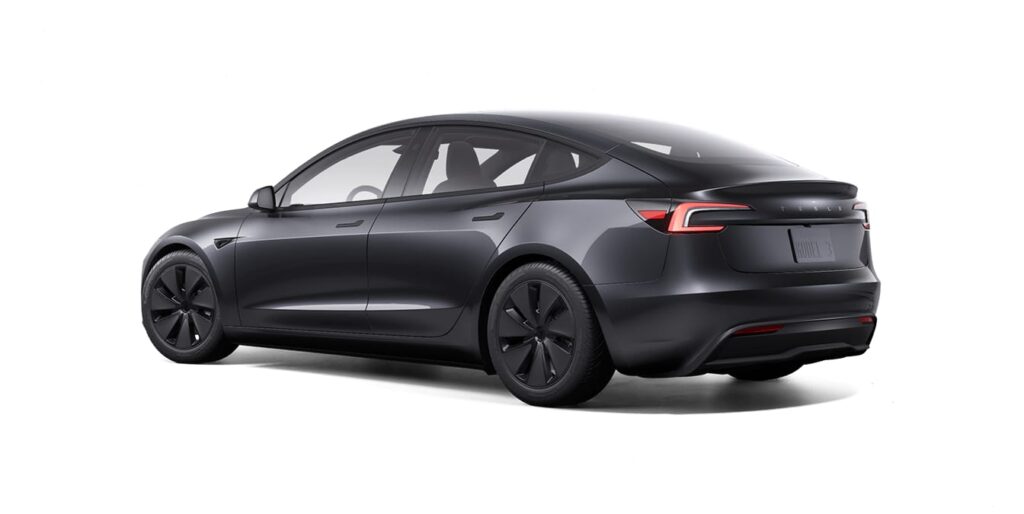
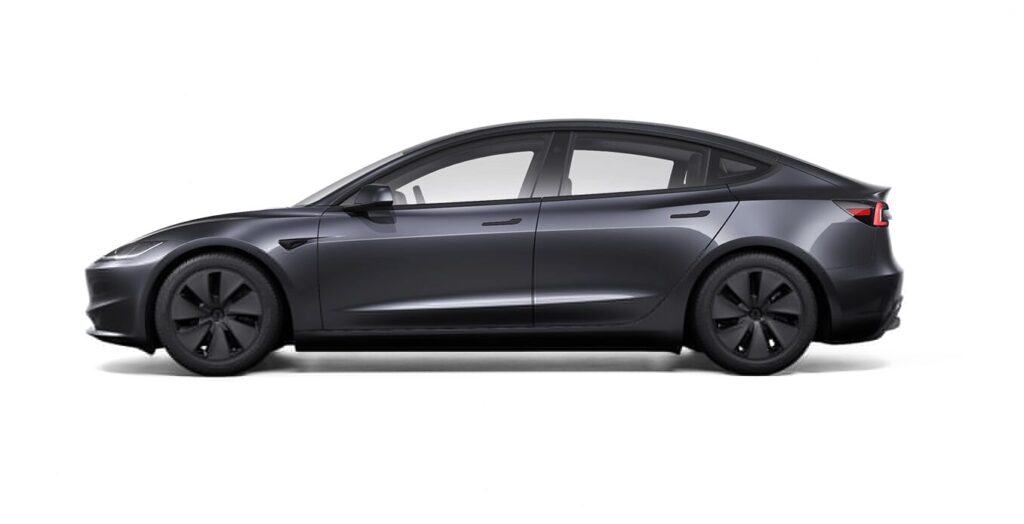
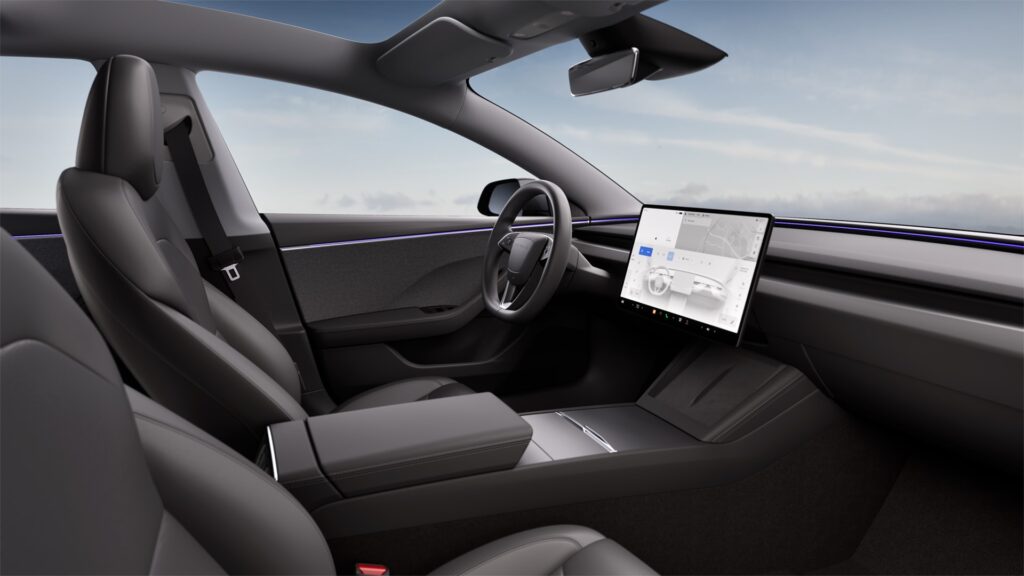
Value Assessment: Is The Model 3 Worth the Upgrade?
The Tesla Model 3 presents a compelling value proposition depending on your individual needs and priorities. It’s not a simple “yes” or “no” answer, but rather a consideration of its strengths against potential drawbacks:
Factors Favoring the Model 3 Upgrade:
Long Term Cost Savings: Electric vehicles typically have lower running costs due to cheaper electricity compared to gasoline, reduced maintenance needs (fewer moving parts), and potential government incentives. Over the lifespan of the vehicle, these savings can be significant.
Technological Advancement: If you value cutting edge technology, the Model 3 stands out with its Autopilot system, over the air software updates, and integrated Supercharger network. It offers a futuristic and connected driving experience that many find appealing.
Environmental Consciousness: Choosing an electric vehicle is a positive step towards reducing your carbon footprint. The Model 3 provides guilt free driving and aligns with environmentally conscious lifestyles.
Performance and Driving Experience: The instant torque and quick acceleration of the Model 3 offer an engaging and unique driving experience. It’s a fun and responsive car to drive.
Strong Resale Value: Tesla vehicles have historically held their value well, due in part to strong demand and their technological advancements. This helps offset the initial purchase price.
Factors to Consider Before Upgrading:
Initial Purchase Price: The Model 3 can be more expensive than comparable gasoline powered sedans.
Charging Infrastructure: While the Supercharger network is expanding, you need to consider the availability of charging stations in your area and the potential for longer charging times compared to refueling with gasoline. Home charging is highly recommended for convenience.
Minimalist Design: The minimalist interior and reliance on the touchscreen for most functions might not appeal to everyone. Some drivers prefer physical buttons and a more traditional cabin layout.
Maintenance: While EVs require less maintenance, repairs can sometimes be more expensive than traditional gas powered vehicle, depending on the issue.
Limited Customization: Compared to other brands, Tesla offers less customization options in terms of colors, interior trims, and aftermarket accessories.
Overall Conclusion:
The Tesla Model 3 is worth the upgrade if you prioritize:
Long term cost savings
Cutting edge technology and driver assistance features
Environmental responsibility
Performance and a unique driving experience
It may not be the best choice if:
Your budget is a primary concern
Charging infrastructure is limited in your area
You prefer a more traditional interior design and a wider range of customization options.
Model 3 vs i4 | Why Get The i4?
Leather Upholstery & Premium Interior Materials
The i4 often features premium leather upholstery, wood trim, and other high quality materials throughout the cabin. These materials enhance the sense of luxury and comfort, making the driving experience more enjoyable. Leather interiors tend to hold their value better, and if well maintained can add a substantial amount of value ($2,000 – $4,000).
BMW’s Curved Display (iDrive 8 or Newer)
The i4 features BMW’s latest Curved Display, integrating a 12.3 inch information display and a 14.9 inch control display into a single, curved unit. The iDrive 8 infotainment system offers enhanced graphics, improved voice control, and over the air software updates. These technology upgrades enhance the car’s usability and appeal to tech savvy buyers and adds a moderate value ($1,000 – $2000)
Adaptive LED Headlights with Laserlight (Optional)
The i4 features adaptive LED headlights with optional Laserlight technology, which provides exceptional illumination and visibility at night. Laserlight extends the high beam range, enhancing safety and convenience. With the increase in technology, this adds about a $1,000 value to these lights.
Comfort Access Keyless Entry & Power Tailgate
Convenience features like Comfort Access keyless entry and a power tailgate make everyday use easier. Comfort Access allows you to unlock and start the car without taking the key out of your pocket. While not critical for resale, these features add around $500 in perceived value for buyers.
Harman Kardon or Bowers & Wilkins Sound System (Optional)
The optional Harman Kardon or Bowers & Wilkins sound systems deliver a high fidelity audio experience. These premium sound systems offer enhanced clarity and sound quality compared to the standard audio system, enhancing the enjoyment of music and audio content. A quality sound system from a well known brand definitely increase appeal ($750 in value).
Driving Assistance Professional Package
The Driving Assistance Professional Package includes a range of advanced safety features such as adaptive cruise control, lane keeping assist, and blind spot monitoring. These features enhance safety and convenience, making the i4 a safer and more comfortable car to drive. The safety features adds about $500 in value.
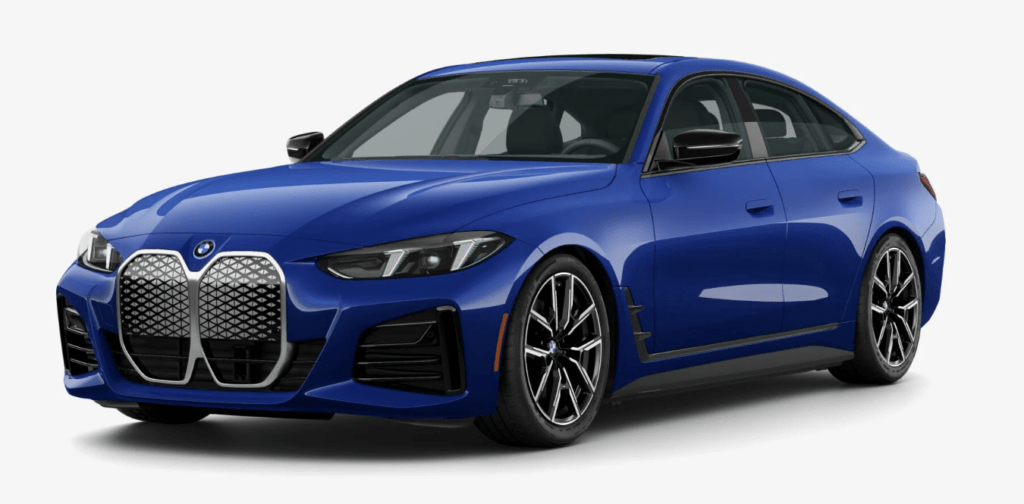
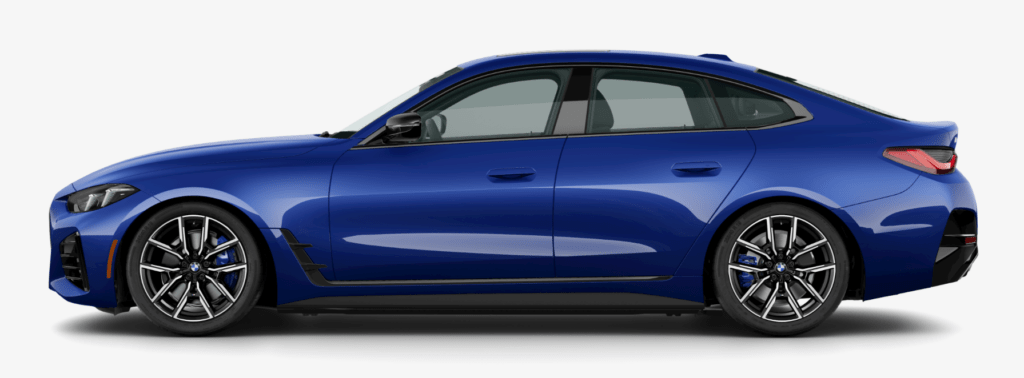
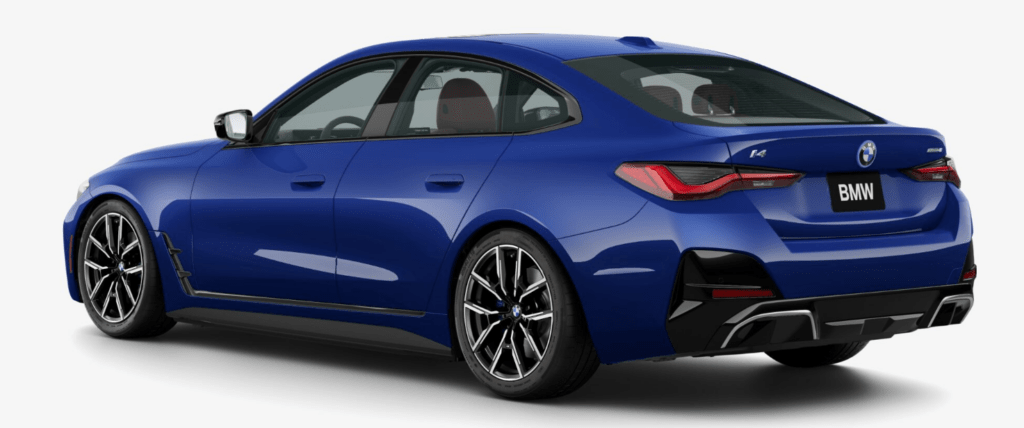

Value Assessment: Is The BMW i4 Worth the Upgrade?
The BMW i4 presents a blend of traditional BMW luxury and electric vehicle technology, making its value proposition a bit more nuanced than a purely electric offering. Whether it’s “worth it” depends on your individual preferences and priorities.
Factors Favoring the BMW i4 Upgrade:
Brand Reputation & Driving Dynamics: BMW is known for its engaging driving dynamics and reputation for luxury and quality. If you value the BMW brand and a sporty driving experience, the i4 offers an electric option without sacrificing those qualities.
Traditional Interior Design & Premium Materials: The i4 features a more traditional interior design with premium materials like leather and wood trim. If you prefer a conventional luxury car interior, the i4 offers a more familiar and comfortable environment compared to more minimalist EV interiors.
Balanced Performance: The i4 provides a good balance of performance and efficiency. It offers quick acceleration and respectable range, making it suitable for both daily commuting and longer trips.
Advanced Technology: BMW’s iDrive infotainment system, combined with advanced driver assistance features, provides a comprehensive and user-friendly technology experience.
Available Federal & Local Incentives: Depending on your location, you may be eligible for federal and local tax credits and incentives for purchasing an electric vehicle, which can help offset the initial cost of the i4.
Factors to Consider Before Upgrading:
Higher Purchase Price: The i4 is generally more expensive than many other EVs, especially when equipped with optional features.
Charging Infrastructure: Similar to all EVs, access to charging infrastructure can be a concern. While the charging network is growing, you’ll need to consider charging options at home and on the road.
Transitional Design: The i4 retains the BMW kidney grille, albeit a mostly closed off version. This can be seen as a positive (maintaining brand identity) or a negative (not fully embracing a modern EV aesthetic).
Resale Value Uncertainty: While electric vehicles are generally holding their value well, the long term resale value of the i4 is still uncertain due to the rapidly evolving EV market.
Dependency on Optional Packages: Some key features, such as the enhanced Driving Assistance Professional package and premium sound systems, are optional and can significantly increase the price of the i4.
Overall Conclusion:
The BMW i4 is worth the upgrade if you prioritize:
The BMW brand and its driving dynamics
A more traditional luxury car interior with premium materials
A balance of performance and efficiency
A comprehensive and user friendly technology experience
It may not be the best choice if:
Your budget is a primary concern
You’re seeking the absolute lowest price point for an EV
You prefer a more radical and futuristic EV design
You don’t value traditional luxury car features
Tesla Model 3 vs BMW i4 Cost Of Ownership
Initial Purchase Price and Depreciation
Tesla Model 3 Long Range:
Estimated MSRP: $47,490 (This is a general estimate, it may vary based on options and location)
Depreciation (5 years): EVs tend to depreciate a bit faster initially but may stabilize. Estimate 35% depreciation over 5 years: $16,621.50
BMW i4 eDrive40:
Estimated MSRP: $57,900 (This is a general estimate, it may vary based on options and location)
Depreciation (5 years): BMWs also depreciate, potentially a bit more initially. Estimate 40% depreciation over 5 years: $22,600
Model 3 vs i4 Energy Costs
(Assuming a new vehicle purchase and 12,000 miles per year)
| Vehicle | Annual Electricity Consumption | Average Electricity Cost (US Average) | Annual Electricity Cost | Total Electricity Cost (5 Years) |
|---|---|---|---|---|
| Tesla Model 3 Long Range | 3,000 kWh | $0.17/kWh | $510 | $2,550 |
| BMW i4 eDrive40 | 3,429 kWh | $0.17/kWh | $583 | $2,915 |
Model 3 vs i4 Maintenance Costs
| Vehicle | Estimated Annual Maintenance ($) | Total Maintenance (5 years) ($) | Estimated Repair Costs (Unexpected Issues) ($) |
|---|---|---|---|
| Tesla Model 3 Long Range | 300 | 1,500 | 500 |
| BMW i4 eDrive40 | 500 | 2,500 | 1,000 |
Model 3 vs i4 Warranty Information
Tesla Model 3 Long Range:
Basic Vehicle Limited Warranty: 4 years / 50,000 miles (whichever comes first)
Battery & Drive Unit Limited Warranty: 8 years / 120,000 miles (whichever comes first)
BMW i4 eDrive40:
Basic New Vehicle Limited Warranty: 4 years / 50,000 miles (whichever comes first)
High Voltage Battery Limited Warranty: 8 years / 100,000 miles (whichever comes first)
Revised Maintenance & Repair Costs (Considering Warranty)
Tesla Model 3 Long Range: With the Basic Warranty covering many potential issues in the first 4 years/50,000 miles:
Estimated Annual Maintenance (Tires, Brakes, Wiper Blades, etc.): $300 (This is a very rough estimate)
Total Maintenance (5 years): $1,500
Estimated Repair Costs (After Warranty Expires in Year 4): $250 (reduced due to EV simplicity)
BMW i4 eDrive40: With the Basic Warranty covering many potential issues in the first 4 years/50,000 miles:
Estimated Annual Maintenance (Tires, Brakes, Wiper Blades, etc.): $500
Total Maintenance (5 years): $2,500
Estimated Repair Costs (After Warranty Expires in Year 4): $500 (reduced due to EV simplicity and most repairs happen during year 1-4)
Model 3 vs i4 Insurance Costs
Insurance rates vary widely based on location, driving record, and coverage level. I will assume a similar insurance cost for both vehicles, around $1,200 per year:
Tesla Model 3 Long Range (5 years): $6,000
BMW i4 eDrive40 (5 years): $6,000
Model 3 vs i4 Total Cost of Ownership (5 Years)
| Expense | Tesla Model 3 Long Range | BMW i4 eDrive40 |
| Initial Price | $47,490 | $56,500 |
| Depreciation | $16,621.50 | $22,600 |
| Energy Costs | $2,550 | $2,915 |
| Maintenance & Repairs | $2,000 | $3,500 |
| Insurance | $6,000 | $6,000 |
| Registration & Taxes | $1,500 | $1,500 |
| Federal Tax Credit | -$3,750 | -$3,750 |
| Total (5 Years) | $72,411.50 | $89,215 |
Final Thoughts
Choosing between the Tesla Model 3 and BMW i4 is a decision that reflects your core priorities as a driver and your lifestyle. Both represent the future of driving in distinct ways, offering electric performance and unique approaches to the automotive experience. There’s no single “better” choice, but rather the best choice for you, based on your personal values and preferences.
The Tesla Model 3:
The Tesla Model 3 remains the gold standard for many when they imagine an electric car. It excels in the areas that have made Tesla a phenomenon: cutting edge technology, long range capability, and an unparalleled charging infrastructure. The minimalist interior and seamless touchscreen interface create a unique, futuristic experience. Its quick acceleration, responsive handling, and over the air updates keep it feeling fresh and exciting. While some may find its minimalist approach too austere, the Model 3 is a compelling choice for those who embrace technology and value innovation above all else. If you seek a driving experience that’s constantly evolving, that boasts a strong Supercharger network, and offers guilt free performance, the Model 3 stands out.
The BMW i4:
The BMW i4 bridges the gap between the classic BMW experience and the electric future. It excels in providing a blend of luxury, comfort, and engaging driving dynamics that are hallmarks of the brand. The i4 boasts a more traditional interior design with premium materials, a familiar iDrive interface, and a composed ride quality that’s comfortable on long journeys. While it may not offer the same raw acceleration or minimalist aesthetic as the Model 3, the i4 makes up for it with its refined driving experience and a brand cachet that speaks to generations of automotive enthusiasts. If you prioritize a car that offers a balance of technology, luxury, and a familiar driving experience, the i4 might be perfect for you.
The Ultimate Verdict:
Choose the Tesla Model 3 if: You want the most innovative EV technology, fastest charging, and seamless integration of the entire ecosystem into a single touchscreen interface.
Choose the BMW i4 if: You want a traditional luxury experience, a comfortable ride, and the familiarity of the BMW brand with a splash of electric power.
Ultimately, the best way to decide is to experience both vehicles yourself. Test drive each model, explore the features that are most important to you, and determine which one best aligns with your personal preferences and lifestyle.
Tesla Model 3 vs BMW i4 FAQ
What's the biggest difference between the Model 3 and the i4?
The biggest difference is their design philosophy. The Model 3 is focused on minimalist design and technology, while the i4 aims for a more traditional luxury car experience with an electric powertrain.
Which car has a longer range?
The Tesla Model 3 Long Range generally has a longer EPA estimated range than the BMW i4 eDrive40, typically by around 30-40 miles.
Which car is faster, Model 3 or i4?
The Tesla Model 3 Long Range generally has quicker acceleration than the BMW i4 eDrive40. The Model 3 Performance variant is significantly faster.
Unlock accurate valuations for your car’s features in seconds – find out what your options are worth today and in the future.
